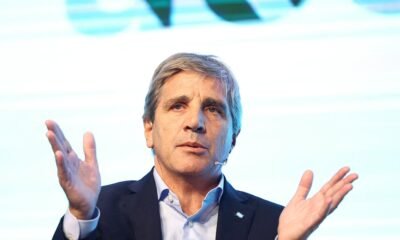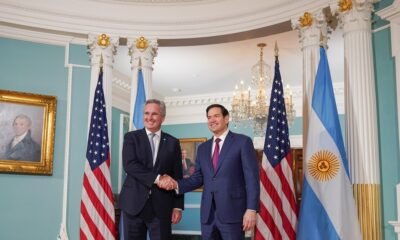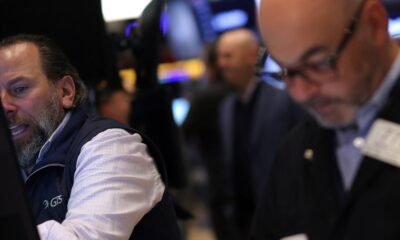INTERNACIONAL
La infraestructura oculta de la IA: anatomía del boom mundial de los centros de datos

Mark Zuckerberg lanzó recientemente un anuncio de proporciones casi épicas: Meta construirá un clúster de centros de datos tan grande que cubrirá un área comparable a Manhattan. Se trata de un complejo que sumará unos dos gigavatios de potencia —lo mismo que consume una ciudad de alrededor de dos millones de personas—, pensado para alojar más de un millón de procesadores gráficos dedicados a inteligencia artificial. La comparación con una ciudad entera no es retórica: ilustra el cambio de escala en el que ya se mueve la infraestructura digital.
En la misma semana, Brasil aprobó tres proyectos en São Paulo valorados en 2.800 millones de dólares. Son centros de datos que, una vez conectados, consumirán más de 350 megavatios de la red eléctrica del país. En términos prácticos, equivale a la electricidad que usan cientos de miles de hogares. Este contraste —un gigante norteamericano planificando su propia “ciudad de servidores” y la mayor economía latinoamericana volcándose en la fiebre digital— resume la dimensión global del fenómeno.
Los centros de datos dejaron de ser discretas instalaciones técnicas escondidas en las afueras. Se han convertido en un asunto de Estado, en motor de inversión y en objeto de disputa política. Ya no se habla solo de cuánto cuestan o qué tan rápido procesan la información, sino de cuánta energía y agua requieren, qué tensiones provocan en las redes eléctricas y hasta qué comunidades pueden o no aceptar tenerlos en su territorio. La “nube” es hoy un actor físico y político que ocupa suelo, demanda recursos y modifica paisajes.
Esta historia comienza con definiciones simples —qué es un centro de datos y qué función cumple—, pero avanza hacia preguntas cada vez más complejas: ¿por qué la inteligencia artificial disparó su construcción? ¿Dónde se concentran y qué significa para regiones como América Latina? ¿Cómo se enfrentan las críticas sobre su voracidad energética e hídrica? Y sobre todo: ¿qué soluciones se plantean para sostener este crecimiento sin quebrar la infraestructura del planeta?
Un centro de datos es, en apariencia, un edificio industrial. En su interior alberga miles de servidores que procesan, almacenan y distribuyen información digital. Cada mensaje en WhatsApp, cada película en streaming, cada transacción bancaria o videollamada pasa por uno de ellos. La metáfora de la “nube” es útil para imaginar conectividad, pero engañosa: la nube se sostiene sobre concreto, acero y kilómetros de cableado.
Estos recintos funcionan 24 horas al día, 365 días del año. El calor que generan los servidores obliga a contar con sistemas de refrigeración sofisticados, desde aire acondicionado industrial hasta enfriamiento por agua en ciclos cerrados. La confiabilidad es clave: la mayoría de los centros se diseñan con redundancias eléctricas y de conectividad que permiten seguir operando incluso si falla una parte de la infraestructura.
Existen distintos tipos de centros. Los de hiperescala, operados por Amazon Web Services, Microsoft, Google o Meta, pueden consumir cientos de megavatios cada uno. Otros son corporativos, diseñados para empresas o instituciones medianas. También crecen los llamados centros “edge”, ubicados cerca de las ciudades para reducir la latencia —el tiempo que tarda una señal en ir y volver—, algo esencial para el internet de las cosas, los videojuegos en línea o los autos autónomos.
La función esencial de todos ellos es la misma: asegurar que los datos estén disponibles, seguros y accesibles a alta velocidad. Si internet es el sistema circulatorio de la sociedad digital, los centros de datos son su corazón.

Durante años, el crecimiento de los centros de datos respondió a la expansión de servicios en la nube y al auge del video en línea. La inteligencia artificial cambió ese ritmo y lo volvió exponencial. Entrenar un modelo de lenguaje como los que hoy impulsan los chatbots requiere billones de cálculos en procesadores especializados y un consumo eléctrico que supera por mucho al de las búsquedas tradicionales en la web. Una sola consulta a un sistema de IA puede usar diez veces más electricidad que una búsqueda en Google.
Las cifras lo confirman. Según el Instituto de Energía y Medioambiente de la Universidad Estatal de Pensilvania, en 2023 los centros de datos de IA ya consumían el 4,4% de la electricidad en Estados Unidos, y esa cuota podría triplicarse para 2028. La Agencia Internacional de la Energía proyecta que hacia 2030 los centros de datos absorberán alrededor del 20% de la demanda global de electricidad. Son números que colocan a esta infraestructura al mismo nivel de industrias históricamente pesadas, como el acero o la aviación.
El impacto no se limita a la energía. La refrigeración es otro factor crítico. Un centro mediano puede utilizar más de un millón de litros de agua por día. La Organización para la Cooperación y el Desarrollo Económicos estima que, de continuar la expansión de la IA, los centros de datos requerirán entre 4.200 y 6.600 millones de metros cúbicos de agua al año hacia 2027, una cantidad superior al consumo anual de países como Dinamarca. En climas cada vez más secos, este detalle es fuente de tensiones con comunidades y autoridades.

Hoy existen unos 11.800 centros de datos en el mundo. Casi la mitad se encuentran en Estados Unidos, con polos enormes en Virginia del Norte —conocida como Data Center Alley—, Silicon Valley, Dallas y Chicago. Esa concentración responde a la combinación de buena conectividad de fibra óptica, cercanía a grandes mercados y disponibilidad de energía relativamente barata.
Europa reparte su capacidad entre Londres, Frankfurt, Ámsterdam y París, aunque varias ciudades han comenzado a limitar nuevas construcciones por falta de espacio y de electricidad. En Asia destacan China, que con más de 400 centros se acerca al volumen europeo, además de Singapur, Hong Kong y Tokio. En Oceanía, Sídney emerge como un nodo relevante para Australia. Rusia mantiene un mercado más pequeño, con énfasis en la soberanía digital y el almacenamiento local.
América Latina avanza con paso más lento, pero Brasil ya se consolidó como líder. São Paulo concentra casi 500 megavatios de capacidad instalada y atrae inversiones de gigantes como Equinix, Scala o Digital Realty. México emerge como segundo polo gracias al nearshoring —estrategia que traslada operaciones a países cercanos para reducir costos y dependencia de proveedores lejanos— y a la instalación de centros en Querétaro, donde se concentra más de la mitad de las operaciones del país. Chile se suma con Santiago, un destino atractivo por su oferta de energía renovable y su clima frío, donde Google y Microsoft ya construyen instalaciones de gran escala.
En comparación con Norteamérica o Europa, la región todavía es pequeña. Pero el ritmo de crecimiento es notable y refleja una tendencia: los centros de datos se están extendiendo a todos los continentes, con cada vez más países dispuestos a ofrecer incentivos para atraer estas inversiones.

El crecimiento acelerado despertó críticas. Irlanda es el ejemplo más claro: sus 82 centros de datos consumieron en 2023 más del 20% de la electricidad nacional, lo que obligó a imponer una moratoria para nuevas conexiones en Dublín. Singapur aplicó una pausa similar cuando sus centros alcanzaron el 7% de la demanda del país. Ámsterdam también frenó temporalmente la construcción de nuevos complejos. En todos los casos, la preocupación es que la infraestructura local no pueda seguir el ritmo de las demandas digitales.
El agua es otro frente de batalla. En Uruguay, un proyecto para instalar un centro que usaría más de siete millones de litros diarios desató protestas en medio de una sequía prolongada. En España, comunidades en Aragón denunciaron que la nube “se bebía” sus ríos. En Santiago de Chile, grupos ambientalistas advierten que los centros de datos compiten con los embalses que abastecen a la población en época seca.
Las respuestas no se hicieron esperar. Las empresas tecnológicas están firmando contratos de largo plazo para abastecerse con energía eólica y solar, y se convirtieron en algunos de los mayores compradores de renovables del mundo. También experimentan con sistemas de enfriamiento que reducen el uso de agua y con la reutilización del calor residual para calefacción urbana, como ya ocurre en Estocolmo.
El debate más innovador gira en torno a la energía nuclear. Google anunció un acuerdo para alimentar futuros centros de IA con pequeños reactores modulares, capaces de entregar unos 500 megavatios de manera constante y sin emisiones directas. Este tipo de reactores aún no están desplegados a gran escala, pero ilustran la búsqueda de soluciones estables y limpias para sostener la expansión de la nube.
Corporate Events,North America,Science / Technology,ASHBURN
INTERNACIONAL
Los líderes de seguridad europeos negociarán el plan de Donald Trump con Ucrania y EEUU en Ginebra: “Un trabajo en progreso”

Representantes de alto nivel de Estados Unidos, Ucrania y asesores de seguridad nacional de Francia, Reino Unido y Alemania se dan cita este domingo en Ginebra para analizar el plan presentado por Washington para un posible desenlace del conflicto en el territorio ucraniano.
El enviado especial estadounidense Steve Witkoff y el secretario de Estado Marco Rubio viajaron para participar de estos contactos, que se enfocan en pulir un documento que establece condiciones para un cese de hostilidades entre Kiev y Moscú. El secretario del Ejército de Tierra de Estados Unidos, Dan Driscoll, y su equipo ya están en la ciudad suiza para reunirse con la delegación ucraniana.
En el centro del debate está un plan de 28 puntos que condiciona el avance de Ucrania a concesiones territoriales, a la aceptación de restricciones sobre el tamaño de su ejército y al abandono definitivo de su objetivo de ingresar en la OTAN.
El presidente estadounidense Donald Trump estableció para su homólogo ucraniano, Volodimir Zelensky, una fecha límite —el próximo jueves— para brindar una respuesta definitiva al marco propuesto, advertencia que se reflejó en las discusiones bilaterales previas a la cita.
Según un funcionario estadounidense en diálogo con Reuters, señaló: “Esperamos pulir los últimos detalles… para redactar un acuerdo que les beneficie (a Ucrania)”. “No se acordará nada hasta que los dos presidentes se reúnan”, confirmó.

La reunión cuenta, además, con la presencia de los principales asesores de seguridad del grupo E3 (Francia, Alemania y Reino Unido), de la Unión Europea e Italia, ampliando el abanico internacional de interlocutores.
Keith Kellogg, enviado especial de Donald Trump a Ucrania, afirmó en declaraciones a Fox News que el plan presentado actualmente es “un trabajo en progreso”. En ese sentido, los aliados europeos de Ucrania remarcaron que el acuerdo “es una base que requerirá trabajo adicional”.
Diplomáticos alemanes indicaron que a Washington y Kiev se les envió un borrador de plan alternativo europeo basado en la propuesta actual, aunque los líderes europeos remarcan que la hoja de ruta de Estados Unidos “necesita trabajo adicional” antes de la fecha límite, pues consideran prioritario asegurar mayores garantías para el gobierno de Zelensky.
Por su parte, el mandatario ruso Vladimir Putin calificó la iniciativa como un punto de partida aceptable, aunque desde el Kremlin se prevé que Moscú objete aspectos concretos, especialmente la exigencia de retirada de territorios ocupados por sus tropas.
Desde Washington, la portavoz de la Casa Blanca, Karoline Leavitt, confirmó que el documento está aún sujeto a negociación y cuenta con el respaldo de Trump. Leavitt sostuvo: “Es un buen plan tanto para Rusia como para Ucrania, y creemos que debería ser aceptable para ambas partes”.
En vísperas de las conversaciones, Zelensky planteó el dilema al que se enfrenta Ucrania: correr el riesgo de perder su dignidad y libertad, o el apoyo clave de la Casa Blanca, si se avanza en los términos actuales del documento negociado.

El plan estadounidense contempla que Ucrania reduzca el tamaño de sus fuerzas armadas a 600.000 efectivos y que la cobertura aérea se limite al apoyo de aviones de combate europeos desplegados en Polonia. Además, la OTAN se comprometería a no emplazar tropas en suelo ucraniano bajo estos términos.
El acuerdo contempla que Kiev acepte reducir su número de tropas a 600.000 efectivos, que la OTAN no despliegue fuerzas en territorio ucraniano y que los aviones europeos de apoyo operativo permanezcan en Polonia.
Un revés para Zelensky, el acuerdo también plantea como condición central que su gobierno convoque a elecciones en un plazo de 100 días. Además, en el ámbito económico, el documento estipula que la reconstrucción de Ucrania se sufrague mediante 100.000 millones de dólares obtenidos de activos rusos congelados en el extranjero, bajo administración estadounidense.
Tras reunirse con representantes del Pentágono el jueves pasado, el mandatario ucraniano subrayó que cualquier negociación debe conducir a “una paz digna” para Ucrania, lo que implica salvaguardar la independencia, la soberanía y la dignidad del país. Según la oficina presidencial, Zelensky prevé discutir personalmente los pormenores del plan con Trump en los próximos días.
(Con información de Reuters)
INTERNACIONAL
La cumbre mundial del clima termina sin acuerdo sobre la reducción del uso de combustibles fósiles
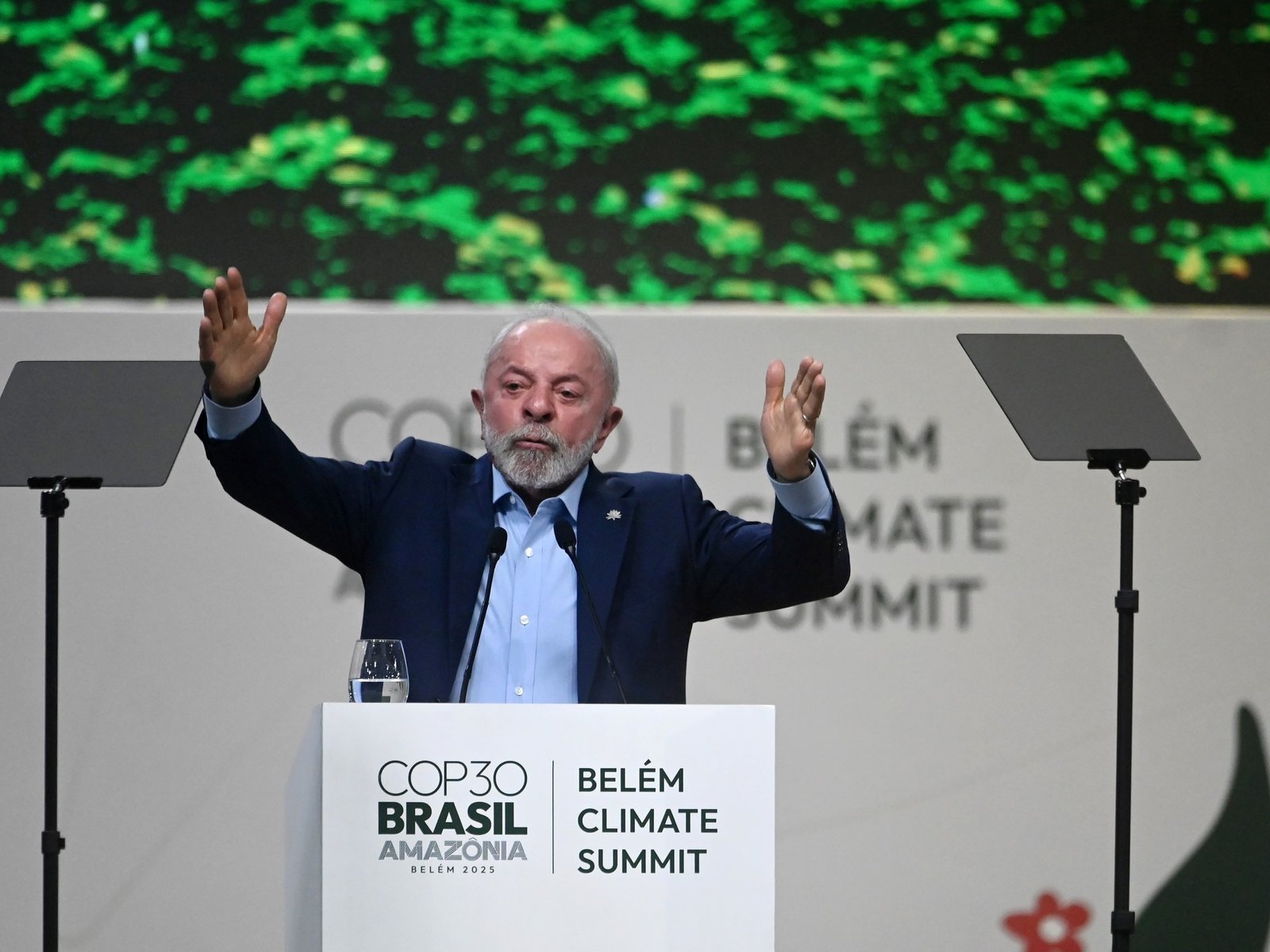
La propuesta de Lula
«COP de la verdad»
INTERNACIONAL
Nayib Bukele ahora se adueña del fútbol: mientras su hermano asume en la federación local, él sueña con el Mundial 2030
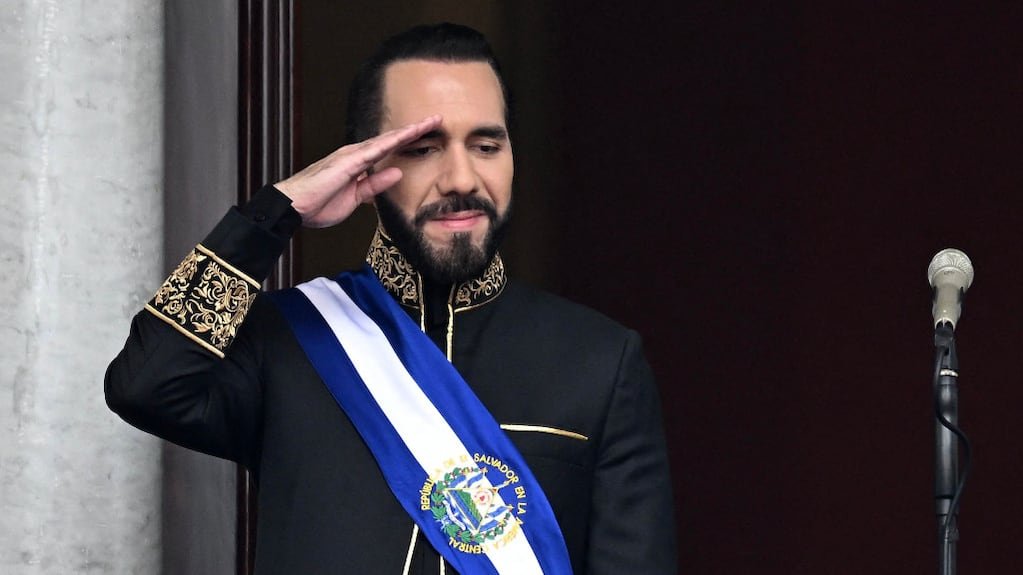
El fútbol es un poderoso imán para gobernantes como Nayib Bukele. El presidente de El Salvador tomará el control de la Federación Salvadoreña de Fútbol (Fesfut) a través de su hermano, Yamil.
No es un hecho aislado. Con una gran popularidad basada en una cuestionada política de “mano dura” que acabó con el crimen organizado y la violencia, el mandatario ya tiene un absoluto control de los tres poderes del Estado. Ahora, puso la mira en el deporte más popular del mundo.
Leé también: Mano dura en El Salvador: ¿por qué Bukele nombró a una militar como ministra de Educación?
El objetivo es simple: tener injerencia total sobre un fenómeno social y cultural que une a seis millones de salvadoreños. Quien controla el fútbol domina gran parte del humor ciudadano. El propósito es llevar al débil seleccionado local al Mundial de 2030 que se jugará en varios países, entre ellos la Argentina.
Para el próximo torneo, de 2026, llegó tarde. El Salvador quedó eliminado en la instancia final de las eliminatorias de la Concacaf.
“El principal objetivo es utilizar el fútbol para alimentar la narrativa de que Bukele está cambiando por completo El Salvador, aun y cuando eso está muy lejos de ser cierto”, dijo a TN el salvadoreño Víctor Aguilar, analista para América Latina de la ONG internacional Crisis Group.
Yamil Bukele asume en la Federación Salvadoreña de Fútbol
Yamil Bukele, de 47 años y medio hermano del presidente, asumirá como titular de la Federación Salvadoreña de Fútbol cuando concluya la misión de la FIFA que intervino la entidad en 2022.
Entonces, el presidente de la Fesfut, Reynaldo Vásquez, fue sentenciado en Nueva York a un año y medio de prisión como parte del “Fifagate”, el escándalo de sobornos y corrupción que sacudió a la FIFA y en especial a América Latina.
El presidente salvadoreño, Nayib Bukele (Foto: EFE)
Yamil Bukele es el único candidato inscripto para las elecciones internas de la federación previstas para el 12 de diciembre. Los distintos delegados de las ligas locales solo tendrán la opción de inclinarse por el hermano del presidente.
“Esperamos que nos vaya muy bien, por el bien del fútbol y de nosotros mismos”, dijo el actual presidente “ad honorem” del Instituto Nacional de los Deportes al lanzar su candidatura.
Leé también: Uruguay sufre una epidemia de homicidios: crece la inseguridad vinculada al narcotráfico
Según Aguilar, “Nayib Bukele ha mostrado interés en tener influencia en la Federación Salvadoreña de Fútbol desde hace mucho tiempo. Por ejemplo, en junio de 2015, cuando recién había sido elegido alcalde de San Salvador, en una publicación en Twitter que después eliminó, dijo: ´Por ahí tengo un familiar que se ofrece para arreglar la FESFUT´”.
En octubre de 2021, ya siendo presidente, tras una derrota de la Selección Nacional ante México en las eliminatorias para el Mundial de 2022, fue incluso más claro y señaló: “Yo creo que es hora de intervenir. Nos sancionan un par de años y luego volvemos jugando de verdad“.
La selección salvadoreña jugó solos los Mundiales de 1970 y 1982. En España 82 sufrió una estrepitosa goleada en contra por 10 a 1 ante Yugoslavia y cayó ante la Argentina de Diego Maradona 2 a 0.
Ahora, el gran sueño es volver a llevar al seleccionado a un Mundial que se niega desde hace 44 años.
“Al presidente Bukele le encanta afirmar que todas sus medidas son ´hitos´ en la historia del país. No dudo de que le encantaría que la selección regrese a un Mundial para poder afirmar que también logró cambiar ese pasado lleno de fracasos y decepciones», afirmó Aguilar.
Por qué el fútbol seduce tanto a los poderes de turno
El fútbol ha sido utilizado por la política (y en especial por distintas dictaduras, como la Argentina) desde siempre. El caso más actual es el de Arabia Saudita, que invirtió cifras multimillonarias para contratar figuras internacionales en su desconocida liga local y aplacar las denuncias sobre violaciones a los derechos humanos.
El reino saudita ya se agendó la sede del Mundial de 2034 y extendió sus inversiones al tenis, el golf y hasta la Fórmula 1. Hoy Arabia Saudita es sinónimo de fútbol y deporte. Muy pocos hablan de abusos.
Pero Bukele no tiene los petrodólares sauditas. Tiene, eso sí, algo clave a su favor: en pocos años logró pacificar a un violento El Salvador. ¿Cómo hizo? Encarceló a decenas de miles de supuestos pandilleros en una ofensiva total contra el crimen organizado. Los salvadoreños prefieren mirar hacia otro lado cuando se habla de las denuncias por violaciones a los derechos humanos que se acumulan en la puerta de la Casa de Gobierno. El presidente fue reelecto el año pasado con casi el 85% de los votos. Su popularidad es enorme.
Sus detractores lo acusan de controlar los tres poderes del Estado, de encarcelar a miles de inocentes y silenciar a la oposición y la prensa. Tras una serie de maniobras, hasta logró imponer la posibilidad de reelección indefinida prohibida por la Constitución. Ahora, quiere echar a rodar la pelota.
Diego Murzi, investigador del CONICET y de la Escuela IDAES-UNSAM, dijo a TN que “el fútbol es el deporte más popular y convocante a nivel global en un momento en que el deporte se ha convertido en un hecho cultural y social central de la vida contemporánea”.
“Con lo cual tener injerencia en el fútbol implica tener decisión sobre asuntos que convocan e interesan a la población”, afirmó.

Aficionados de El Salvador animan un partido de las las eliminatorias de la Concacaf (Foto de archivo: EFE/Rodrigo Sura)
Para Murzi, especializado en sociología del deporte, “el fútbol se ha convertido en un juego geopolítico. Queda de manifiesto con (Donald) Trump interesándose por el Mundial o apareciendo en el Mundial de Clubes, cuando no forma parte de ninguna manera de su biografía”.
“Lo que refleja eso es lo importante del fútbol. Si pensamos en el proyecto de Bukele, que aspira a exceder los límites nacionales y proyectarse como figura relevante a nivel global, es lógico que intente tener bajo su control el fútbol de su país”, afirmó.
Según el analista, “gran cantidad de gente, sobre todo en Latinoamérica, piensa a la geopolítica basándose en el fútbol. Por eso cree que Argentina es un país relevante en el concierto global, o que India y China no lo son. Creo que para un proyecto político totalitario, o de largo alcance como el de Bukele, es importante movilizar esa dimensión”, dijo.
Bukele no ha inventado nada. Muchos gobernantes han intentado acercarse al deporte en los últimos años como “vehículo de promoción nacionalista o a los deportistas como personificación exitosa de ciertos valores intrínsecos que la actividad deportiva competitiva moviliza y que son afines a la ideología liberal o ´de derecha´ (éxito personal, meritocracia, individualismo, mercantilización, sacrificio, autosuficiencia)”, concluyó Murzi.
Habrá que ver ahora si el presidente salvadoreño logra tapar con el fútbol -y su enorme popularidad interna- los crecientes cuestionamientos internacionales a su política de “mano dura”.
El Salvador, Nayib Bukele, Sumario

 POLITICA1 día ago
POLITICA1 día agoTras la orden de decomiso de los bienes de CFK, la Justicia evalúa avanzar sobre el departamento de San José 1111

 POLITICA2 días ago
POLITICA2 días agoJavier Milei sobre las coimas en la ANDIS: “Hay mucha mala intención política”

 ECONOMIA3 días ago
ECONOMIA3 días agoEl Gobierno invierte USD 300 millones en la compra de 43 trenes nuevos para el AMBA

